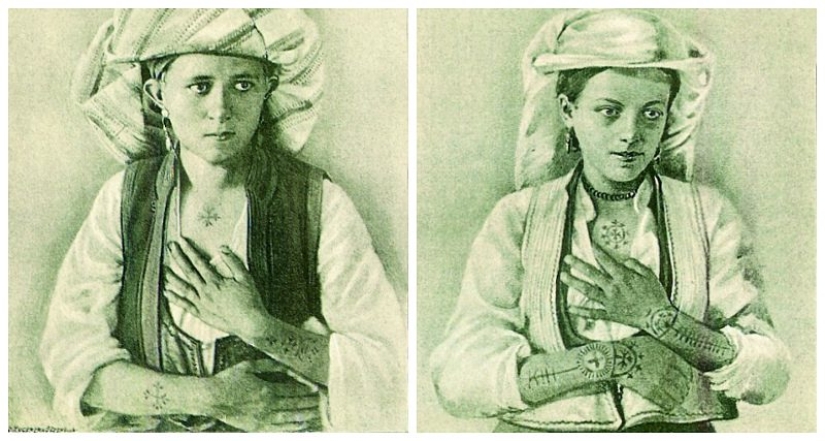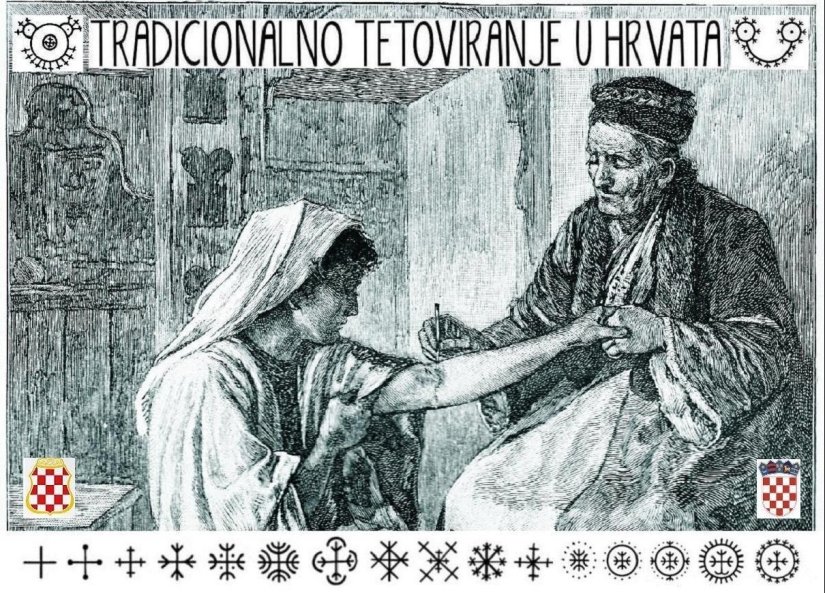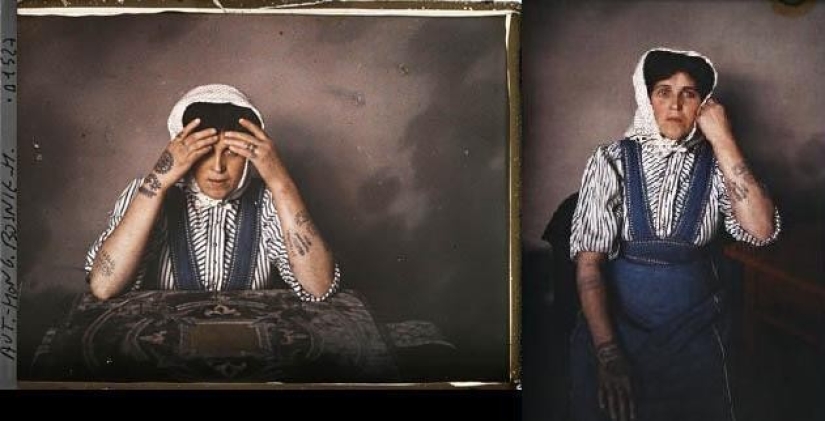Women's tattoo Slavs: the tradition that we are losing
Categories: Europe
By Pictolic https://pictolic.com/article/womens-tattoo-slavs-the-tradition-that-we-are-losing.htmlWomen's tattoo is not a fashion trend of the last decades, and the tradition is rooted in ancient times. Girls-Ainu on the Northern Japanese island of Hokkaido, were applied to the face image of the bear grin, Gypsy women would adorn themselves with intricate patterns of lines and dots. Had their special tattoos, and the southern Slav.

In many Nations the tradition of the sacred feminine tattoos have survived to this day, but in Europe they have almost disappeared. For the longest time the custom of tattooing the women is preserved among the Balkan peoples. Today, meet the grandmother, whose hands are covered with intricate ornaments still possible in the remote Montenegrin and Croatian villages, but every year the chance to see vehicles of this tradition less and less.
Croatian peasant women show tattoos. Photos of the late XIX century
The Slavic peoples there are many legends and tales in which a girl disguised in man, and with arms in his hands to protect his people from the enemy. In the life of the southern Slavs is unlikely to be possible — the woman at once would have exposed tattoos on the hands, to hide that is not easy.
Interesting, but the Balkan peoples tattoos were worn only by women — men would rather not have distinguishing marks on the body. The art of the application of such tattoo was also exclusively female — masters gave techniques and schemes of the ornaments from generation to generation over thousands of years.

The tattoos were especially popular among the Montenegrins, Bosnian Croats and Albanians. And Albanian women applied the patterns on the body regardless of religion — this was done as a Muslim, and Catholic.
Croatian women with tattoos on the hands and forearms. Photo of the early XX century
The most common place to apply patterns from the Balkan girls was the back of the hands. Interestingly, the ornaments on the right and left hands have always been different. Less frequently met patterns covering the arms up to the elbows, and quite infrequently — the tattoos between the collarbones. On his chest most often depicted the cross, which is decorated with additional decorative elements in the form of suspensions.
Same tattoo the Slav was infrequent, but all the drawings on the body consisted of the same elements and characters. Knowing the language of women's tattoo, you can understand what sort of belongs to woman, and what events transpired in her life.
The man who owned the language of feminine tattoos, could read the fortune of their owners, as books
The first picture the girl put in 4-5 years, the second after coming of age as a sign of readiness for marriage. But sometimes the tattoo appeared and without reference to the onset of puberty. The girl could protect an additional pattern, if she was sick.
In later life tattoo appeared in connection with important life milestones in women's lives — a marriage, birth of child, loss of a spouse. The Slavs in other regions of all these events was reflected in the costume, jewelry, and hairstyles, but girls from the Balkans were not able to hide information — it has always been with them in the form of complex patterns on the skin.
In these pictures, taken in 1896, the clearly visible tattoos on his arms and chest
The first researchers of Balkan traditions believed that women's tattoo appeared in connection with the birth of the Ottoman Empire. But it is not — the cross of balkanian is not always symbol of Christianity. Even before baptism, crosses the Slavs was associated with the sun and is a powerful talisman against evil spirits.

The tradition of Slavic tattoos, women gradually began to die in the XIX century. The promotion of far East Western European traditions led to the fact that people with tattoos began to be perceived as savages or representatives of the criminal world — robbers, pirates. Two well-known researcher of Balkan traditions, who worked in the region in the late nineteenth century — Leopold Glitch and Ciro Truhelka noted that decorating the body with figures gradually cease even in remote mountain villages.
Leopold Gluck wrote about the fact that I met women not only cover their ornaments with their hands, but with a tattoo on his face. Most often, a tattoo was marked on his forehead, rarely on the cheeks. According to the observations of the scientist, larger and more intricate designs were suited to the Catholics. Orthodox women had tattoos modest and mostly in places covered by clothes.

Table of women's tattoos, made by Ciro Truhelka. The diagram shows a tattoo of Roman Catholics from the Bosnian villages
Gluck was interested in how balkanites call themselves these tattoos. With surprise he noted that common term, neither the Serbs nor the Montenegrins, or the Albanians for this phenomenon did not exist. The researcher decided that this tradition is not too old, otherwise I would definitely have called.

In those days, when a Glitch and Truhelka traveled through Balkan villages, the tattoo was taken to strike during religious holidays, near the temples. The work was performed by women tatuirovochki after the Church service. Leopold Glitch saw this as a sure sign that the custom is purely Christian. Is pagan the action could be tied to religious holidays?
Today, meet in the Balkans a woman with traditional tattoos — a great success
The opinion of the chiro Truhelka was different. Scientist noted that, along with Christian symbols such as the cross, the heart and the monogram of Christ, tattoo contain many other characters, among which were images of plants and animals, stars, moon symbols. Truhelka suggested that all these elements are connected with the cult of fertility which prevailed in the lands of Europe, long before the advent of Christianity.
Unlike Gluck, Truhelka would not be so categorical about anchor tattoos to modern religions. He spent a lot of time studying ancient sources and found a mention of women's tattoos of the Balkan peoples from several ancient authors.
One of the last carriers of ancient traditions. Photos of the mid 80-ies of XX century
Unfortunately, even in the nineteenth century to establish the exact origin of the ancient custom of tattooing women was already very difficult. The carriers of this tradition could not tell any Truhelka, no Glitch nothing important. Now, when this tradition has almost died, we have to accept that we will never know about its origins.
Keywords: The Balkans | Women | Tattoo | Tradition
Post News ArticleRecent articles

Although digital photography and photo processing technologies have greatly advanced the boundaries of image manipulation, photo ...

This is very questionable from an ethical point of view, but no less popular event was held annually as part of the fair in ...
Related articles

American artist Lee Price is sure that eating is a completely natural process, but many are ashamed of their attitude to food, ...

Sex — is not only enjoyable, but also a very useful exercise. Orgasm improves the General condition of the organs and ...

Ladies, no offense, but men are better at navigating the terrain than you are. Men, do not be offended, but ladies are better than ...

Sometimes people commit such monstrous acts that they become an inspiration for horror filmmakers. Thus, the master of the genre ...